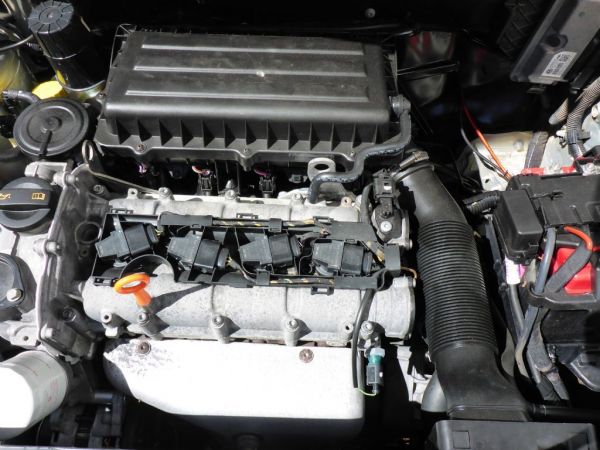Ensure long-term reliability with the right clp engine.
Ensure long-term reliability with the right clp engine.
Blog Article
How a Clp Engine Can Boost Performance in Various Industries
The arrival of CLP engines marks a substantial shift in functional efficiency throughout various fields, driven by their capability to optimize fuel intake and reduce downtime. Industries such as production and logistics stand to acquire substantially from their robust style and consistent power outcome, which assure to improve procedures and enhance efficiency. As companies progressively focus on sustainability alongside effectiveness, the duty of CLP engines ends up being a lot more critical. What stays to be seen is just how these innovations will shape the future landscape of industrial operations and their effect on more comprehensive economic fads (clp engine).
Introduction of CLP Engines
CLP engines, or Constant Liquid Propellant engines, stand for a substantial advancement in propulsion modern technology, specifically for area applications. These engines utilize a continuous feed system that permits for the continual expulsion of propellant, resulting in enhanced performance and performance compared to typical strong or hybrid propulsion systems. By maintaining a consistent circulation of liquid propellant, CLP engines can attain much more precise drive control, which is important for maneuvering spacecraft in numerous mission circumstances.
The style of CLP engines integrates innovative materials and cutting-edge fuel monitoring systems. clp engine. This leads to reduced weight and boosted dependability, essential aspects for long-duration space goals. Moreover, the continuous operation minimizes the threat of combustion instability, a typical challenge in standard rocket engines.

Advantages in Production
The production of Constant Liquid Propellant (CLP) engines provides several noteworthy advantages that boost both performance and cost-effectiveness. Among the main benefits is the streamlined manufacturing process, which decreases the complexity associated with conventional propulsion systems. By utilizing liquid propellant, manufacturers can attain better accuracy in engine efficiency, bring about optimized power outcome and minimized waste.
Furthermore, CLP engines facilitate a greater level of modularity, enabling easier assimilation right into various manufacturing lines. This adaptability can significantly lower lead times and enhance total operational adaptability. Making use of CLP innovation also has a tendency to decrease the demand for considerable maintenance because of less relocating parts, which converts into lowered downtime and operational prices.

Applications in Logistics
Leveraging Continual Fluid Propellant (CLP) engines in logistics supplies substantial benefits in functional effectiveness and dependability. These engines supply a durable service for different transportation requirements, allowing the seamless motion of products across vast distances. The inherent layout of CLP engines permits regular power result, which equates into smoother and much more predictable transport timetables.
Among the More hints crucial applications of CLP engines in logistics is in heavy-duty freight transportation, where they can drive This Site both ground and airborne cars. Their ability to maintain high efficiency under varying load problems makes certain that shipment timelines are met, thereby boosting client fulfillment. Furthermore, CLP engines can be integrated right into automated logistics systems, promoting real-time tracking and optimizing course preparation.
Furthermore, the resilience of CLP engines reduces upkeep downtime, enabling logistics firms to maximize their operational capacities. This is especially beneficial in warehousing procedures, where effectiveness in handling and moving products is critical. As logistics proceeds to evolve, the assimilation of CLP engines represents a forward-thinking strategy that not only boosts performance yet likewise sustains the industry's expanding demands for dependability and speed.
Effect on Power Effectiveness
Just How do Continuous Liquid Propellant (CLP) engines boost energy effectiveness in transportation? CLP engines use a regular flow of fluid gas, optimizing combustion procedures and keeping a stable drive result. This design lessens power losses connected with standard burning engines, where fuel shipment can differ and bring about inefficiencies.
The constant procedure of CLP engines enables a more effective thermal cycle, causing greater particular impulse contrasted to conventional look at here now engines. clp engine. This equates to lowered gas usage for the exact same quantity of job done, considerably lowering operational expenses throughout different transport fields, consisting of aviation and maritime industries
Furthermore, the ability of CLP engines to preserve optimal performance under varying tons conditions decreases the requirement for constant velocity and slowdown, better boosting gas performance. Boosted power effectiveness not only adds to cost savings but also leads to lower greenhouse gas emissions, straightening with international sustainability objectives.
Future Trends and Innovations
Arising improvements in Constant Liquid Propellant (CLP) engine technology promise to revolutionize the landscape of transport performance and sustainability. As markets pivot toward greener alternatives, CLP engines stand at the center, incorporating ingenious materials and layout techniques that improve performance while minimizing ecological effect.
One of one of the most encouraging patterns is the adoption of crossbreed systems that integrate CLP engines with sustainable power resources. This synergy can optimize gas usage and decrease emissions, straightening with worldwide sustainability objectives. Developments in computational liquid dynamics (CFD) are facilitating the layout of more aerodynamically reliable engines, leading to decreased drag and improved fuel performance.
Moreover, the development of clever monitoring systems is established to enhance functional effectiveness. These systems leverage information analytics and IoT innovation to maximize engine performance in real-time, making sure that the engines operate within their most effective criteria.
As research study remains to explore alternate propellant formulations-- such as biofuels and synthetic gas-- the future of CLP engines looks appealing. By using these developments, markets can not just improve their effectiveness yet also contribute dramatically to a cleaner, much more lasting future in transportation.
Final Thought
In conclusion, CLP engines stand for a substantial advancement in performance throughout several markets. The integration of innovative materials and less moving components lessens maintenance requirements, while alignment with sustainability objectives settings CLP engines as a crucial modern technology for the future.
Report this page